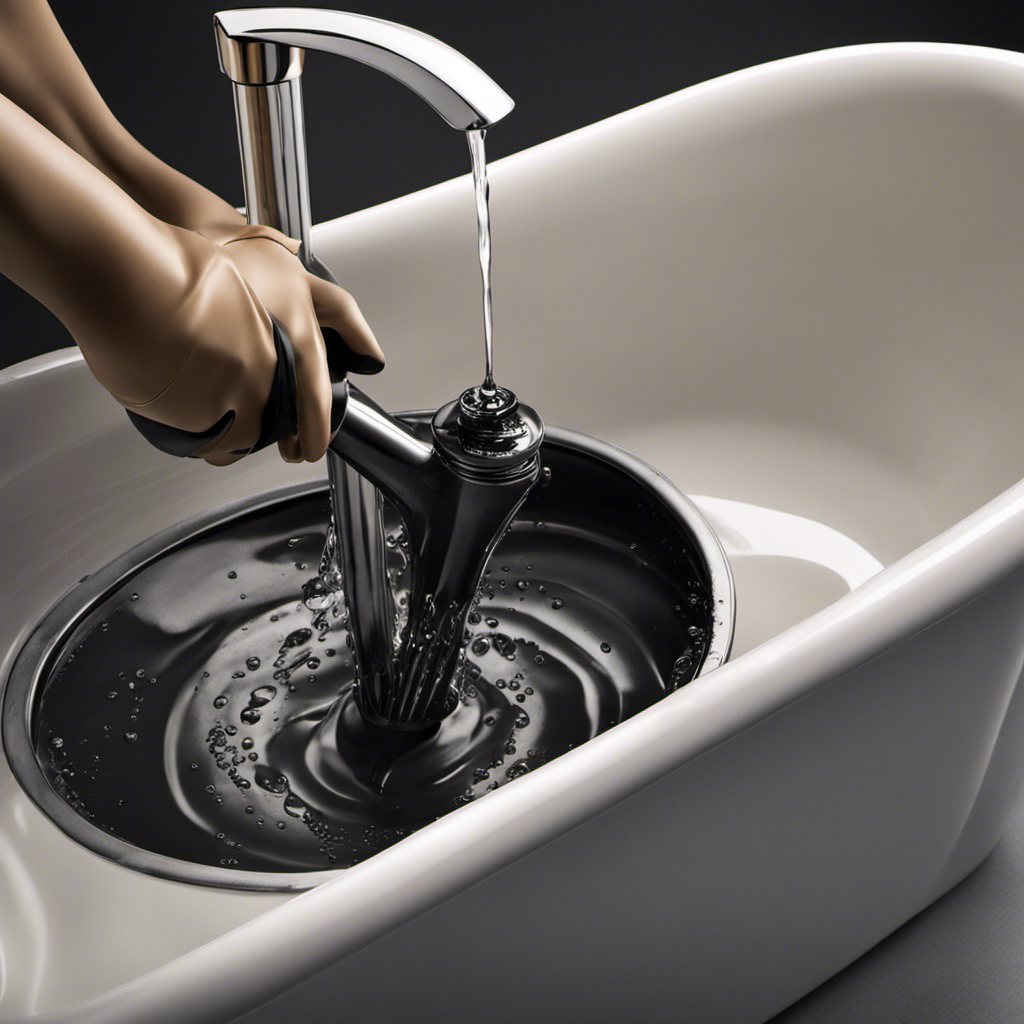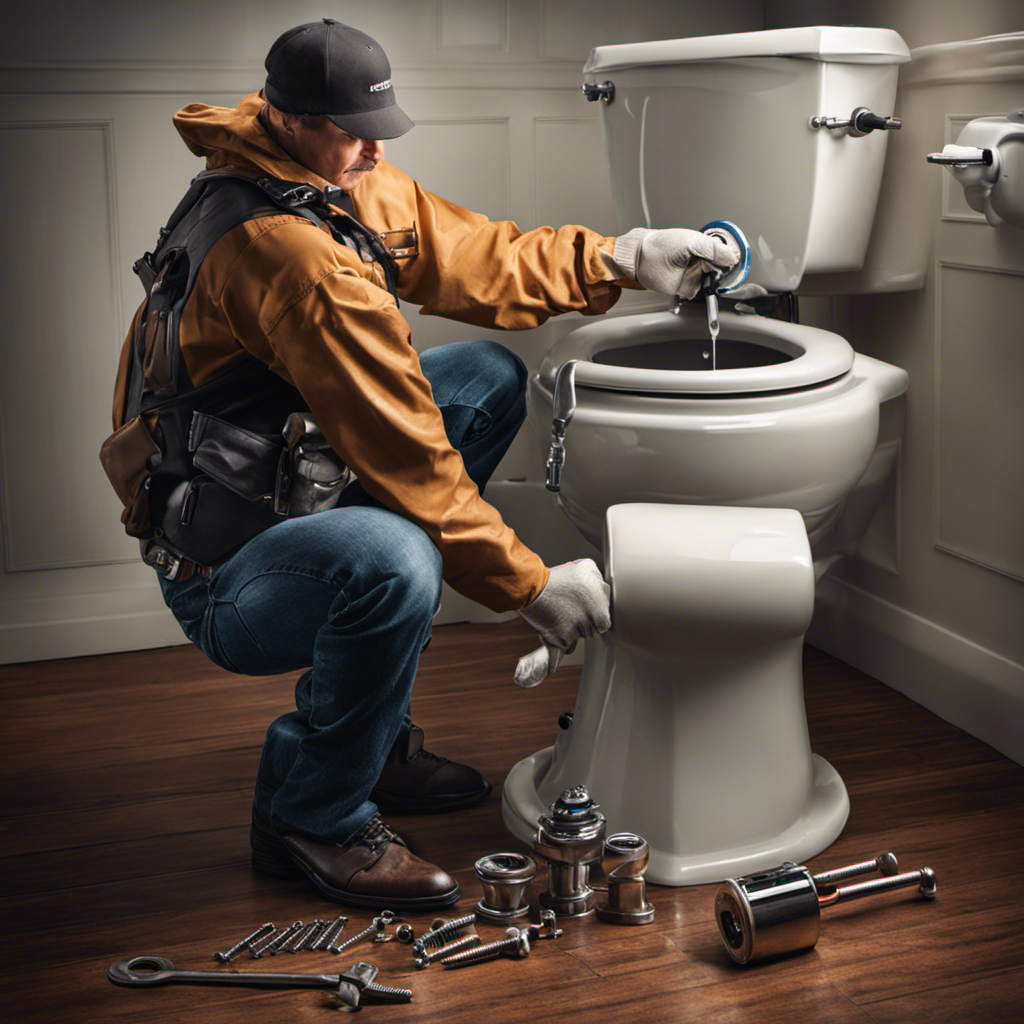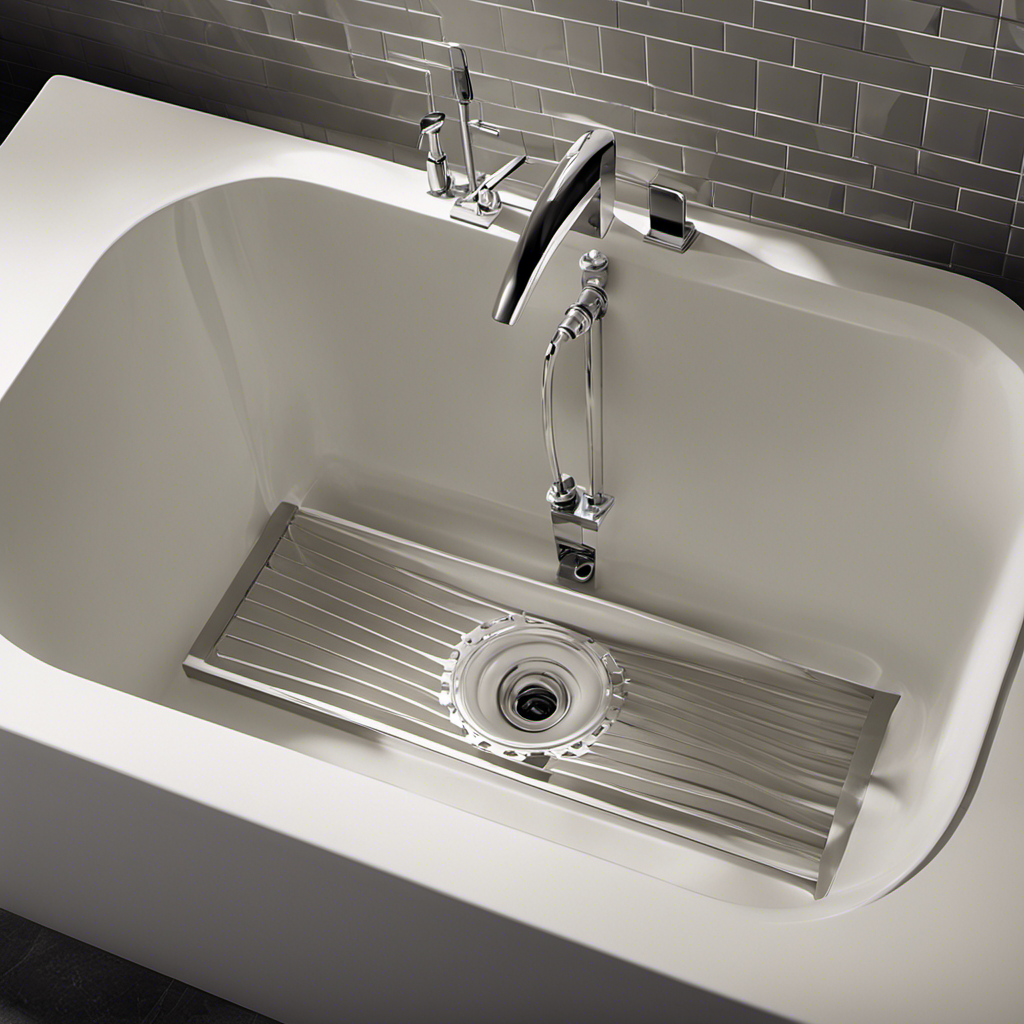I’m here to guide you through the frustrating challenge of unclogging a bathtub with standing water.
Picture this: you’re standing ankle-deep in water, desperately searching for a solution.
Well, fear not! In this step-by-step article, I’ll share the most effective methods to tackle this issue.
From identifying the cause of the clog to using chemicals or seeking professional help, I’ve got you covered.
So, let’s dive in and get that bathtub flowing freely again!
Key Takeaways
- Observing signs of a serious clog is important before attempting to unclog a bathtub with standing water.
- Gathering the necessary tools and supplies, such as the right plunger and knowledge of bathtub drain mechanics, is crucial for effective unclogging.
- Attempting basic methods like using a plunger and drain snake can be effective in unclogging a bathtub with standing water.
- Using chemicals or natural remedies can be an option to clear the clog, but safety precautions should be taken and natural remedies may take longer to work.
Identifying the Cause of the Clog
Once you’ve determined the cause of the clog, you can proceed with unclogging the bathtub. Identifying the cause of the clog is crucial in order to effectively tackle the problem.
Common clog triggers include hair, soap residue, and mineral buildup. To identify the cause, start by observing the signs of a serious clog. If water is not draining at all or draining very slowly, it indicates a significant blockage. Additionally, if you notice gurgling sounds or foul odors coming from the drain, these are also signs of a serious clog.
Gathering the Necessary Tools and Supplies
First, you’ll need to gather all the tools and supplies required for the task at hand.
To unclog a bathtub with standing water, you will need a plunger specifically designed for drains. Choosing the right plunger is essential for effective unclogging. Look for a plunger with a wider, flat cup that can create a strong seal around the drain. This will help create the necessary pressure to dislodge the clog.
Additionally, it is important to understand the mechanics of a bathtub drain. Most bathtub drains have an overflow plate that controls the water level. Make sure to cover the overflow with a wet cloth or duct tape to create a seal before plunging.
Now that you have the right tools and knowledge, you’re ready to tackle the clog.
Attempting Basic Methods to Unclog the Bathtub
To attempt basic methods for clearing the clog, you can start by using a plunger specifically designed for drains. This is a common tool that most people have at home. Here are three steps you can take to troubleshoot and deal with common bathtub clogging issues:
-
Position the plunger over the drain, ensuring a tight seal. Apply firm pressure and push down, then pull up in a rapid motion. Repeat this action for about 15 to 20 seconds.
-
If the plunger doesn’t work, try using a drain snake or auger. Insert it into the drain and rotate it clockwise while pushing it further. This will help break up the clog and clear the drain.
-
If the clog persists, you may need to remove the drain cover and clean it manually. Use a screwdriver to unscrew the cover, then use a flashlight to inspect and remove any debris or hair that may be causing the clog.
To prevent future bathtub clogs, consider using a drain strainer to catch hair and other debris, and regularly clean the drain to remove any buildup.
Using Chemicals or Natural Remedies to Clear the Clog
You can also try using chemicals or natural remedies to clear the clog. When it comes to unclogging a bathtub with standing water, there are pros and cons to using both chemical and natural methods.
Chemical drain cleaners are effective in breaking down clogs quickly. However, they can be harsh on your pipes and may contain harmful ingredients. It’s important to take precautions when using chemicals, such as wearing gloves and protective eyewear, and ensuring proper ventilation in the bathroom.
On the other hand, natural remedies like baking soda and vinegar can also be effective in clearing the clog. They are safer for your pipes and the environment, but may take longer to work.
Regardless of the method you choose, always follow the instructions carefully and take the necessary safety precautions to avoid any accidents or damage.
Seeking Professional Help to Unclog the Bathtub
If the clog persists, it may be time to seek professional help. Hiring experts can save you time, frustration, and potential damage to your bathtub and plumbing system. Here are three reasons why seeking professional help is a smart choice:
-
Expertise: Professional plumbers have the knowledge and experience to identify the cause of the clog and determine the most effective solution. They can quickly diagnose the issue and provide a long-lasting fix.
-
Specialized Tools: Plumbers have access to specialized tools and equipment that DIY solutions may not have. These tools can effectively remove stubborn clogs without causing further damage to your bathtub or pipes.
-
Peace of Mind: By hiring professionals, you can have peace of mind knowing that the clog will be resolved correctly. They will ensure that your bathtub drains properly and that there are no underlying issues that could lead to future problems.
Conclusion
In conclusion, unclogging a bathtub with standing water can be a frustrating task, but with the right tools and techniques, it can be easily resolved.
Just like removing a clog, we can also remove obstacles in our own lives. By identifying the cause, gathering the necessary supplies, and using various methods, we can overcome any challenge.
And if all else fails, don’t hesitate to seek professional help. Remember, just as the water flows freely again, so can we find our own path to success.










